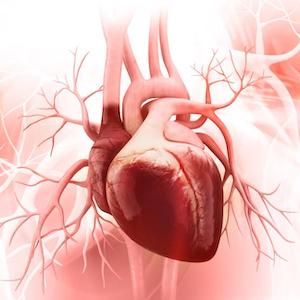News
Article
Self-Recognition of Myocardial Infarction Symptoms Could Reduce Mortality Risk
Author(s):
A new analysis suggests improved self-recognition of myocardial infarction symptoms may reduce cardiogenic shock and death by prompting a rapid hospital visit.
Credit: Adobe Stock

Self-recognition of myocardial infarction symptoms was an independent predictor of in-hospital mortality in new research, highlighting the benefit of rapid symptom recognition to improve patient survival.1
The findings, presented at the European Society of Cardiology (ESC) Congress 2023, reported low symptom recognition among nearly 12,000 patients with recurrent myocardial infarction and even lower rates among those with a first-time event.
“Patients with a repeat heart attack were more likely to know the symptoms than first-time sufferers, but recognition was low in both groups,” said study author Kyehkwan Kim, MD, Gyeongsang National University Hospital in the Republic of Korea.2 “Most patients could identify chest pain, but less than one-third knew the other symptoms."
The clinical significance of self-recognition for myocardial infarction symptoms amongst the public is well-understood. On the other hand, there is limited evidence of self-recognition for ischemic symptoms in patients with recurrent myocardial infarction. Kim and colleagues aimed to verify the association between symptom recognition and clinical characteristics with clinical outcomes in patients with recurrent myocardial infarction.1
The study used data from the 2016 to 2019 Korean Registry of Acute Myocardial Infarction for Regional Cardiocerebrovascular Centers (KRAMIRCC) registry for myocardial infarction in South Korea. Survivors were asked if they recognized myocardial infarction symptoms, including “chest pain,” “shortness of breath,” “cold sweats,” “radiating pain to the jaw, shoulder, or arm,” “dizziness/vertigo/lightheadedness/loss of consciousness,” and “stomachache.” Patients were either classified as “recognized symptoms” if they could identify ≥1 symptom or as “did not recognize symptoms.”
Investigators compared characteristics between patients, time to life-saving treatment, and survival between the 2 groups, after adjusting for age ≥70 years, sex, education, living with a spouse, previous registration in the database, cancer, dyslipidemia, cardiogenic shock, and the presence of acute decompensated heart failure.
Overall, a total of 11,894 patients with myocardial infarction were included in the analysis. The rate of recurrent myocardial infarction in this population was 9.7% (n = 1136), compared to 90.3% (n = 10,623) of patients who experienced a first-time event. In those with a repeat event, 118 were excluded due to missing data, failure to answer questions related to symptoms, or presentation with cardiac arrest, leaving 1,018 patients in the analyses.
Upon analysis, a little more than half (52.3%) of patients with recurrent myocardial infarction were able to recognize the symptoms. However, only 14.4% of patients with a first-time myocardial infarction could identify the symptoms. Among those with recurrent myocardial infarction, the symptom recognition rate was 57.5% for previous enrollees in KRAMI-RCC and 43.2% for those not previously enrolled in the registry.
Most patients (92.9%) were able to identify chest pain as a symptom of myocardial infarction, while 32.1% recognized shortness of breath and 31.4% recognized cold sweats. A little more than 1 in 4 patients recognized radiating pain (27.4%), only 7.5% identified vertigo/lightheadedness/loss of consciousness, and 1.3% recognized stomach aches.
Investigators found men were more likely to recognize symptoms compared with women (79.3% vs. 69.0%), with other factors, including younger age, higher education level, and living with a spouse, linked to better symptom recognition.
Approximately 57.4% of patients who correctly identified the symptoms of myocardial infarction received treatment to open the arteries and restore blood flow within 2 hours. In comparison, only 47.2% of patients who did not recognize the symptoms received treatment and more often had cardiogenic shock and heart failure. Patients who recognized symptoms had a lower in-hospital mortality rate (1.5%), as well, compared with those who could not identify symptoms (6.7%).
“The findings indicate that education is needed for the general public and heart attack survivors on the symptoms that should trigger calling an ambulance,” said Kim. “In our study, patients who knew the symptoms of a heart attack were more likely to receive treatment quickly and subsequently survive. Women, older patients, those with a low level of education, and people living alone may particularly benefit from learning the symptoms to look out for.”
References
- Kim K, Kim H, Kim HR, Kang MG, Koh JS, Park JR, Hwang SJ, Hwang JY. Effect of symptoms recognition in patients with recurrent acute myocardial infarction: from KRAMI-RCC. Poster presentation at the European Society of Cardiology (ESC) Congress 2023. Amsterdam, the Netherlands. August 25-August 28.
- Escardio. Heart attack victims who recognize symptoms are less likely to die in hospital. EurekAlert! August 22, 2023. Accessed August 22, 2023. https://www.eurekalert.org/news-releases/998861.




